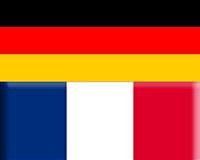| . |  |
. |
Dubai, United Arab Emirates (UPI) Jan 21, 2011 Military procurement by Middle Eastern states, primarily Saudi Arabia, the United Arab Emirates, Iraq and Israel, is expected to grow by 14 percent over the next five years, a new industry analysis concludes. U.S. defense contractors will dominate the market, although the Persian Gulf states of the United Arab Emirates, Kuwait and possibly Qatar are considering buying multi-role Rafale fighters built by France's Dassault in deals with a combined value of $5 billion-$6 billion. "Russia has footholds in Syria and Yemen and is making efforts to help equip the Lebanese armed forces," analyst Dan Darling observed in the annual Middle East Arms market survey issued by Forecast International, which has headquarters in Newtown, Conn. "But its regional market share pales in comparison to that of the United States, with (Russian) President Dmitry Medvedev signing a decree back in September banning the supply of a variety of Russian armaments to Iran." Darling noted that Moscow, which has been striving to bolster its arms exports, is likely to have to cede its status as principal arms supplier to Iran to China. That's because of Moscow's curbs on weapons sales to Iran following the imposition of harsh economic sanctions on the Islamic Republic by the U.N. Security Council in June over Tehran's contentious nuclear program. Saudi Arabia is scheduled to receive U.S. arms worth around $67 billion over the next decade to boost Arab defense capabilities against feared expansionist plans by Iran. The United Arab Emirates, along with other Arab states allied to the United States, are expected to spend as much again to upgrade their military forces over the same period. This will largely comprise U.S. weapons systems, including ballistic missile defense systems, fighter aircraft, combat helicopters, battle tanks and missile-armed warships. The acquisition of U.S. weaponry will, in theory at least, enhance interoperability with U.S. forces deployed in the region. But long-running political and a dynastic rivalries between the ruling families of the Gulf Arab states continues to hamper the development of an integrated defense system between the six members of the Gulf Cooperation Council -- Saudi Arabia, the Emirates, Kuwait, Oman, Qatar and Bahrain. The possible acquisition of French combat aircraft by three of these states underlines the failure of the GCC members to forge a coherent common defense strategy. The Saudis and Oman, buoyed by rising oil prices, are seeking advanced U.S. aircraft, such as Boeing's F-15S Eagle and Lockheed Martin's F-16 multi-role jet. But, Darling noted, "despite the lack of progress within the GCC in terms of a common procurement approach, the one constant is that at the national level, defense investment remains robust, generally representing between 10-20 percent of total state expenditure annually. "For 2010, combined GCC defense/security investment was $68.3 billion. Forecast International expects that total to increase to $73.4 billion in 2011 and continue growing to $82.5 billion by 2015." Iran, the annual survey concluded, may lack access to the advanced modern weapons systems its regional adversaries are acquiring -- largely because of longtime international arms embargoes -- but it still spends $9.3 billion-$9.5 billion a year on defense. That level of expenditure, which puts Tehran among the five highest defense spenders in the region behind Saudi Arabia, Israel, Iraq and the emirates, is expected to continue in the near term. But, Darling points out, little of this is spent on modern weapons platforms. Most of Tehran's defense expenditure "goes toward personnel costs, missile programs, upgrading existing platforms and developing indigenous hardware." With U.S. forces pulling out of Iraq, the Baghdad government is building up its own military forces and "will invest an average of $12.5 billion annually through 2015 toward the development of the Iraqi Security Forces," Darling said. "Although the Iraqi government would like to diversify its supply chain, the U.S. remains its principal provider of military equipment." Washington provides around $1.9 billion toward Iraq's procurement fund and so long as that's the case the United States will continue to be its main arms supplier. "Should Washington turn off the tap," Darling commented, "others will surely step into the void, including France, Russia and suppliers from Eastern Europe." These were Iraq's main arms suppliers during the dictatorship of the late Saddam Hussein from the 1970s until he invaded Kuwait in August 1990.
Share This Article With Planet Earth
Related Links The Military Industrial Complex at SpaceWar.com Learn about the Superpowers of the 21st Century at SpaceWar.com
 France, Germany with closer defense ties?
France, Germany with closer defense ties?Paris (UPI) Jan 20, 2011 France wants closer defense industry cooperation with Germany, Defense Minister Alain Juppe said this week, in what could culminate in a deal similar to the one Paris struck with Britain last year. "I hope, finally, to re-raise the question of a strengthening of our industrial cooperation with Germany," Defensenews.com quoted Juppe as saying Tuesday in the traditional New Year's wishes ... read more |
|
| The content herein, unless otherwise known to be public domain, are Copyright 1995-2010 - SpaceDaily. AFP and UPI Wire Stories are copyright Agence France-Presse and United Press International. ESA Portal Reports are copyright European Space Agency. All NASA sourced material is public domain. Additional copyrights may apply in whole or part to other bona fide parties. Advertising does not imply endorsement,agreement or approval of any opinions, statements or information provided by SpaceDaily on any Web page published or hosted by SpaceDaily. Privacy Statement |